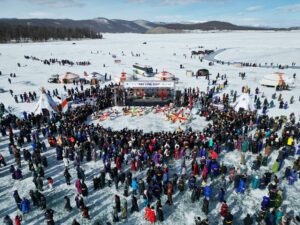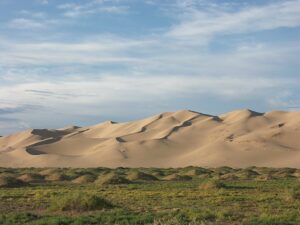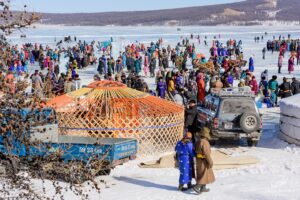When you try to browse about Mongolia before you travel there almost everywhere you will see articles about how Mongolians are special, and why you should visit their land.
So what makes them so special that they are on the suggestion list of all travel enthusiasts?
One of the main reasons is their interesting, rich culture nomadic lifestyle.
Mongolians are one of the world’s last nomadic cultures, and these nomads still live in traditional ways even in the 21st century, just like how they used to live since the Hunnu Empire era.
Even to this day, Mongolian nomads live in a ger (yurt), move 2 to 4 times each year to find the best and suitable place to stay as per weather conditions, and breed their animals, including goats, sheep, cattle, games, camels, and horses.
Almost up to 40% of Mongolians are leading a nomadic lifestyle.
So if you want to try life as a Mongolian nomad, here we have a few facts about the Mongolian Nomadic lifestyle.
Mongolian nomads move from place to place 2 to 4 times a year to provide their animals with better living conditions.
Nomadic families choose their new locations carefully, and usually, it’s the same from one year to another. Therefore most of them will have 2 or more summer and winter places.
In the summertime, nomadic families will move to a location near a river, to ensure water supply for the family and herds, and good pastures.
As for a winter, to protect themselves from the Mongolian intense cold winter, the family moves to their “winter” place which is sheltered from the wind in a small valley or at the edge of a mountain. And most of them will have small enclosures to gather the herds at night so they keep warm on cold, harsh winter nights.
For a nomadic each animal is precious. They would provide their owners with meat, milk, fat, leather, and they are a central part of the diet for the family. Also, the manufacture of the yurt, the traditional clothing, tools, and almost everything that nomadic families use is produced from their livestock.
Horses will be used as transportation, also produce Airag – fermented mare’s milk. Cows are also used as transportation but mostly produce the milk for making dairy products like yogurt, cheese, and aaruul or dried curds.
For meat, Mongolians would choose sheep and it’s almost their main diet. The skin and wool of the sheep are used for clothing and making felt to insulate the Gers. Goats produce cashmere (goat’s down), and it’s of the highest quality cashmere in the world.
For two-humped Bactrian camels, mostly live in the Mongolian Gobi desert region and are used for transportation, meat, milk, and wool.
And, Yes! Mongolian nomads are famous for being the best host. Their hospitality is incomparable. In some regions, such as the Gobi, families never lock their door when they leave their home in case of any guest would come. They will welcome you as a respected guest and offer meals and tea.
Nomads spend their daily lives busy while herding their animals. From early morning to sunsets Mongolians would milk their cows, yaks, and goats, making dairy products from the milk, and produce cheese, yogurt, shearing, or combing to produce felt and felt clothes.
Today in Mongolia, almost 900.000 nomads are living in the enormous land, carrying on their ancient tradition of nomadic lifestyles.
Understanding and learning how Mongolians are living in this way even in the 21st century certainly attracts many tourists.
With the Geru Journey travelers will be allowed to spend time with Mongolian nomads, take a rest in Gers and learn first-hand about the traditional Mongol daily life just like they are part of nomads, and create their very own lifetime memories of it.





